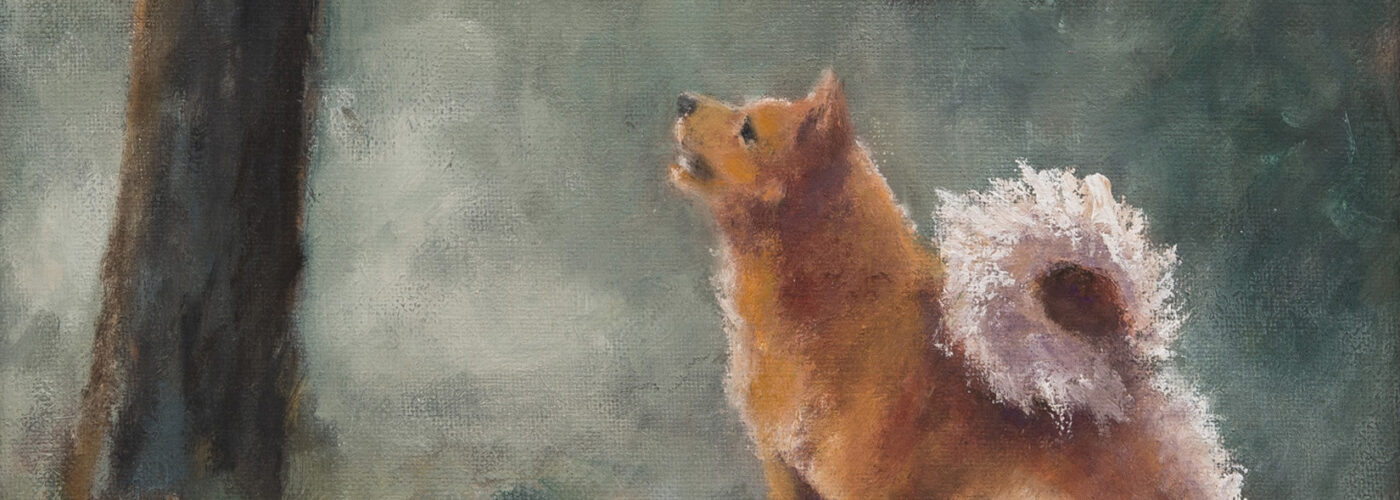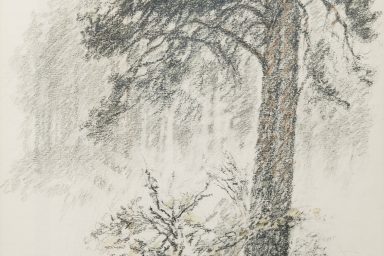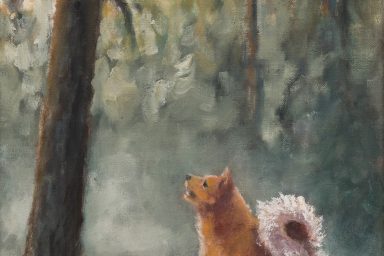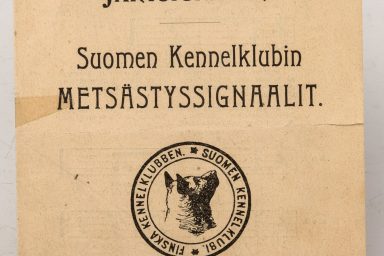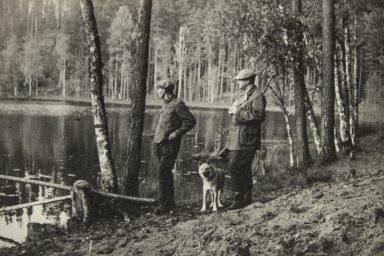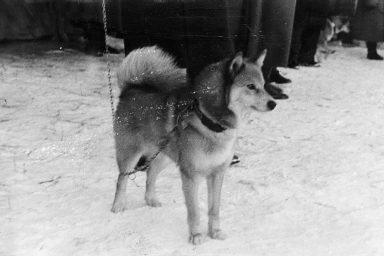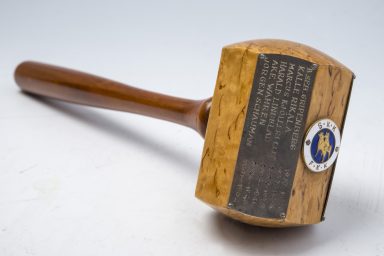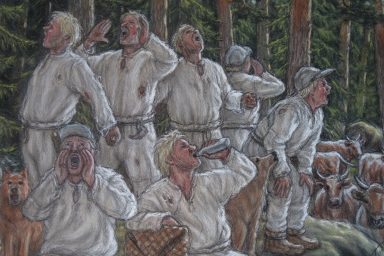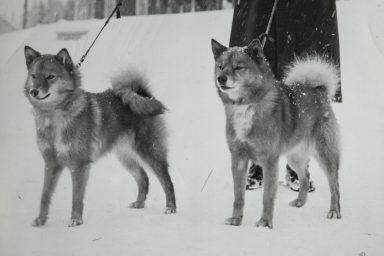The Finnish Spitz barks at birds up in trees and is therefore an original rarity in the world. It is a dog with veiled intelligence, and it has a strong instinct to hunt all types of game. It is quick on the mark and capable of doing independent and confident decisions. It indicates the location of the bird with its barking and behaviour, and will try to keep the bird in the tree by barking until the hunter gets there. When the Spitz barks at the tree its handsome wobbly tail “enchants” the bird.
The Finnish Spitz significantly helped its master to provide livelihood. The woods and the waters were almost exclusively the only places that provided food. In the woods for instance, using its clear bark the dog informed its master about the location of the bird. Wobbling its light-coloured tail, the dog charmed the bird to remain in tree so that the master had enough time to find the tree and shoot the bird with his bow.
Today the Finnish Spitz has learned to understand and apply its instinct to hunt. We have come to an age when the dog is instructed with the rules and regulations that are related to its master’s competitiveness.
In other words, the Finnish Spitz is able to focus on the same game as its master sets his mind on. It is a dog that retains a great connection with its master in the forest. Life has thought the Finnish Spitz that the greatest threat in the woods is a wolf. While the Finnish Spitz is intensively focusing on its job to bark a wolf can easily find and surprise it. The dog takes care of its safety by keeping the distance to its master at a few hundred metres at the most.
The Finnish Spitz was once inexpensive to support. It used to find its food itself, which probably explains why the dog eats very little today as well. It is still fascinated by mice and moles, since these creatures used to be its primary nutrition back in the day.
It was mainly the Spitz that used to be in charge of getting money – with other words, fur. The currency unit at the time was called “kiihtelys” which included 40 squirrel skins. Who else would find fur game and reveal its location to the master if not “pikinokka”, the Finnish Spitz with its pitch black nose. The Spitz was brave and independent enough to confront and hunt the bear: many skins were hanged to dry, thanks to the dog’s barking. There are also several stories about times when the dog has saved its master from a bear by nipping the bear from behind, and by doing so giving its master time to escape. The Finnish Spitz developed almost a passionate relationship with hunting squirrel and pine marten. This feature is clear in some dogs even today.
Today the Finnish Spitz is used mostly for hunting grouse birds, although it can be used when hunting elk and small game, such as pine marten and raccoon dogs, as well. It has always been considered as a dog that is capable of hunting any kind of game, and is therefore very easily trained to do so. The Finnish Spitz is also used as a retrieving dog for instance in duck hunting. Its most important feature is its loyalty towards its master, both at home and in the woods.
